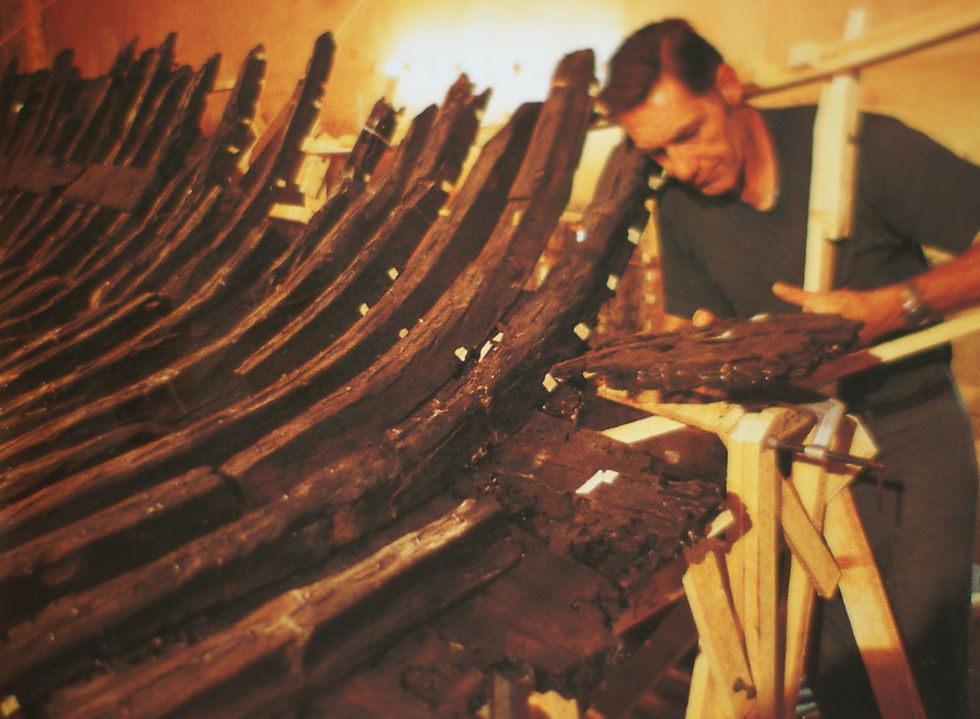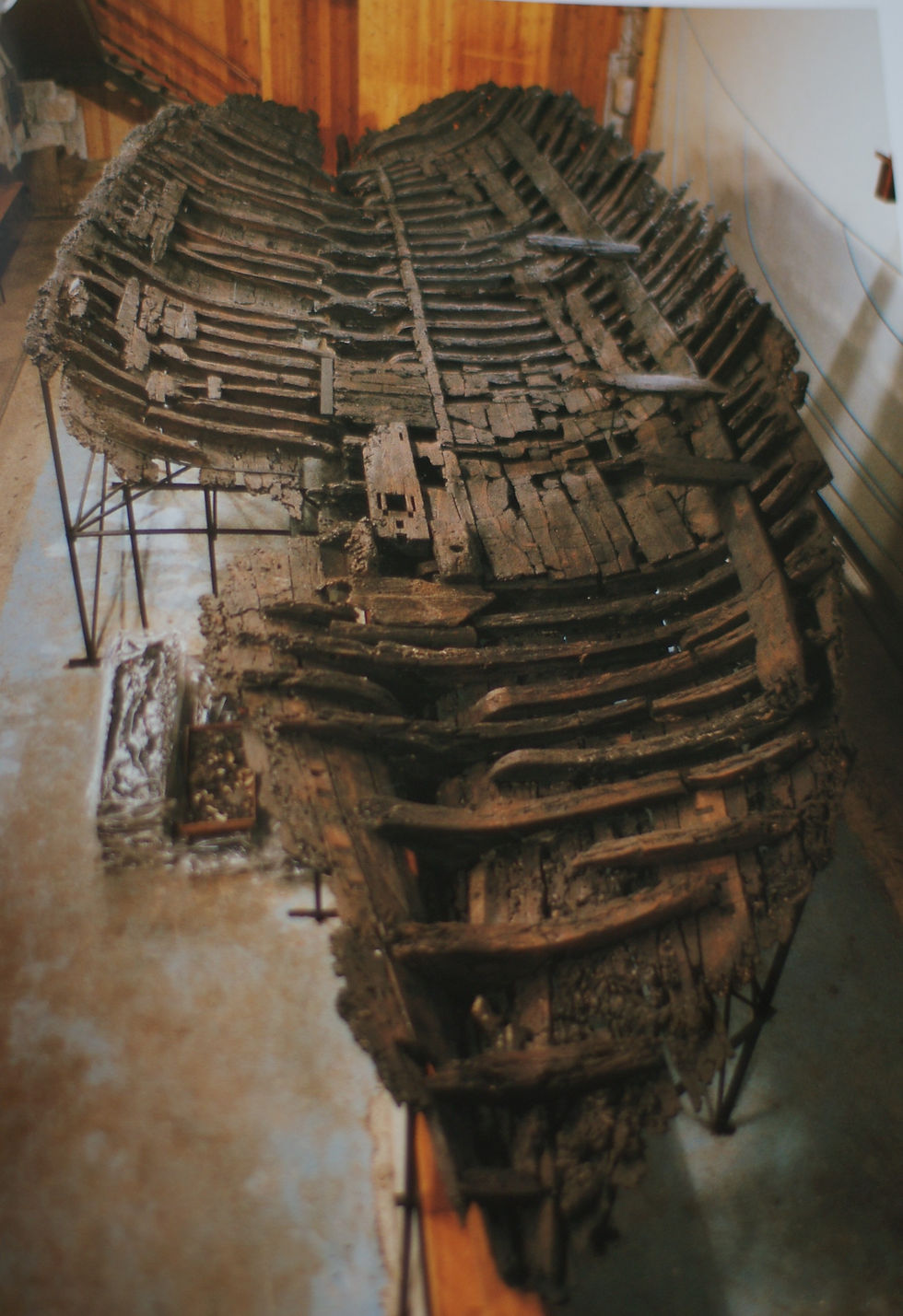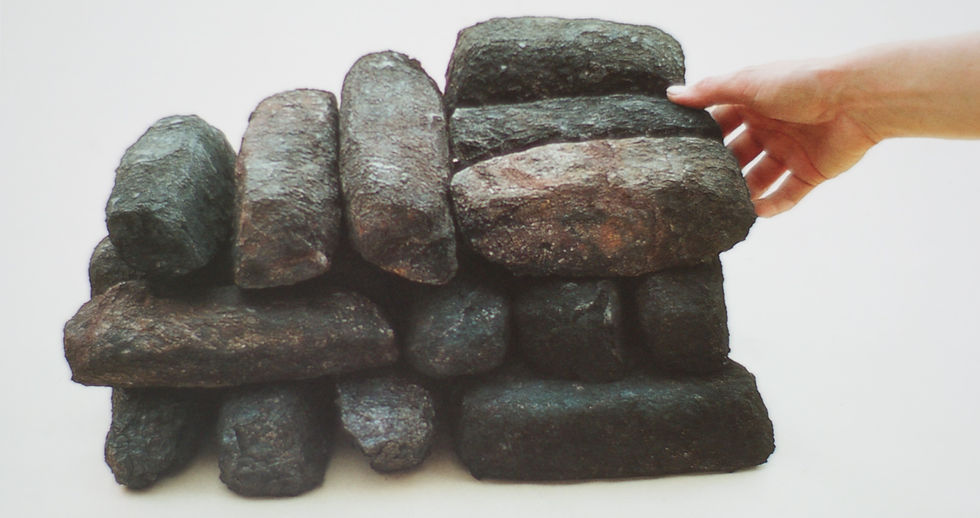The Kyreneia shipwreck
- Theofano Moraiti
- Aug 7, 2024
- 4 min read
In the eastern basin of the Mediterranean, in the northern part of Cyprus, lies Keryneia one of the oldest cities on the island. On its northern shores, one of the best-preserved ships of the Hellenistic era in the eastern Mediterranean was found. Its construction dates back to around 320 - 310 BC, and it is estimated that it sank around 295 to 285 BC, during the turmoil that arose from the wars of Alexander the Great's successors for the annexation of parts of his empire.
In 1966, Andreas Karolou, a farmer, municipal councilor, and experienced diving instructor, while diving off the northern coast of Keryneia for sponge fishing, discovered the remains of a shipwreck at a depth of about 30 meters. Two years later, the Antiquities Department of Cyprus, in collaboration with archaeologists Michael Katsev and his wife Susan Womer Katsev, began underwater excavations.
The peculiarity of the Keryneia shipwreck lies in the excellent condition of the hull of the 14-meter-long and 4.2-meter-wide ship, which has preserved almost 75% of its original timber. This fortunate event is attributed to the level of muddy seabed outside the port of Keryneia, which provided, with the absence of oxygen, the most suitable conditions for the preservation of both the ship and its cargo. The process of recording, preserving, and reassembling the pieces of the hull lasted a total of five years. Upon completion of the procedures, the ship was exhibited on a permanent scaffolding in an exhibition space with a latticed ceiling at the Castle of the Crusaders Museum in Keryneia.
The Keryneia ship traveled in the eastern Mediterranean for a period of 15-25 years and underwent many repairs. Shortly before it sank, it was repaired again in an attempt to remain watertight. Its last voyage is estimated to have started from Rhodes, from where most of the ceramics it carried originated. Among the findings were household items such as cups, oil flasks, deep and shallow plates, as well as salt cellars in sets of four, indicating the presence of a captain and three sailors living in the confined space of a ship.
In the ship's hold, millstones were placed, either as spare parts for bakers or as ballast, while atop them were found amphorae, possibly containing wine, and vessels with remains of almonds, garlic, onions, and other types of food. Among the ship's findings are also some personal items of the captain, including a bronze spoon in the shape of a duck, an inkwell, indicating literacy and record-keeping, and some vessels with the inscriptions "ΕΥ" and "ΕΥΠ" which may have symbolized his initials. A series of cooking utensils, combined with the absence of a distinct hearth, indicate that the men were accustomed to cooking on land most evenings, anchoring in a cove and engaging in fishing to prepare their meals.
About the sinking of the ship, there are numerous theories from researchers. Initially, the coast outside the ancient city of Kyrenia was quite safe in terms of natural hazards. The findings of the shipwreck confirm the existence of regular routes to the areas of Samos, Rhodes, Nisyros, and subsequently Cyprus, with possible trips even to Egypt, proving that the ship had been repeatedly in these seas in the past. However, it appears to have been an old, weak, and heavily loaded vessel, and possibly in a sudden storm, some patched seams may have opened, causing it to sink.
Another possibility emerged when archaeologist Michael Katsev broke some stones found inside the ship, revealing imprints of eight spearheads which were likely meant for protection. This discovery, combined with the absence of certain items such as scales and weights for weighing the cargo, led researchers to consider the possibility of a potential attack on the ship.
In the ship's rigging, a particularly threatening object was found. It is a "curse tablet" a binding called "katadesmos." This lead object wrapped in a lead case, pierced with a bent bronze nail. Such bindings in the Hellenistic and Roman times were made by a professional. They concealed a curse aimed at harming enemies. They are often found buried deep in tombs or thrown into wells, referring to the "binding of victims," rendering them powerless. This specific binding did not contain any inscriptions, but only two pieces of white twine, which may symbolize the "binding" of the old ship to the seabed.
Additionally, during the sinking of the ship, in the period 295-286 BC, the eastern Mediterranean suffered the consequences of wars for claiming parts of the empire of Alexander the Great. The fleet of Rhodes patrolled the coasts for the possibility of piracy; however, some political adversaries offered rewards to pirates to hinder trade both on and off the island. On the northern coast of Cyprus, in the small coves east of Keryneia that could serve as a refuge, opportunistic pirates may have lurked, ready to exploit a distressed and heavily laden ship passing through the port. They could easily attack the ship and then seize valuable items and crew members to sell them in slave markets or to return them to their families after ransom payments. At that point, perhaps an illiterate pirate would rhythmically chant a curse over the binding he carried with him, nailing it to the ship, hoping for its complete sinking.
The age of the ship, overloading, and piracy are some of the possible explanations for the sinking of the Keryneia ship. Whatever the truth may be, this particular shipwreck is one of the most significant maritime findings of the Hellenistic period in the eastern Mediterranean and a milestone in the field of underwater archaeology in the Greek region.
Proof-reading: Despoina Nakaktsi
Bibliography
Katzev S. W., «Το Αρχαίο Πλοίο της Κυρήνειας, κάτω από τα νερά της Κύπρου», Βαλαβάνης Π. (επιμ.), Μεγάλες Στιγμές της ελληνικής αρχαιολογίας, Εκδόσεις Καπόν, Αθήνα, 2018, 286-300
Τζάλας Χ. Ε., «Κυρήνεια ΙΙ, μια προσπάθεια πειραματικής αρχαιολογίας», «Το Αρχαίο Πλοίο της Κυρήνειας, κάτω από τα νερά της Κύπρου», Βαλαβάνης Π. (επιμ.), Μεγάλες Στιγμές της ελληνικής αρχαιολογίας, Εκδόσεις Καπόν, Αθήνα 2018, 300-306
Katzev S. W., "Resurrecting an Ancient Greek Ship: Kyrenia, Cyprus", Bass G. (επιμ.), Beneath the Seven Seas: Shipwrecks, Seafaring, and Archaeology, Thames & Hudson, London, 2005, 72-80
Dr van Duivenvoorde W., “Anchoring the Kyrenia Ship: An experimental project to reconstruct the ship’s anchor”, Flinders University, Adelaide, 2017
Berlin A. M., “At Home on Board: The Kyrenia Ship and the goods of its crew”, Peignard-Giros A. (επιμ.), DAILY LIFE IN A COSMOPOLITAN WORLD: POTTERY AND CULTURE DURING THE HELLENISTIC PERIOD Proceedings of the 2nd Conference of IARPotHPLyon, November 2015, 5th – 8th, Wien, 2019, 563-564
Used sites











